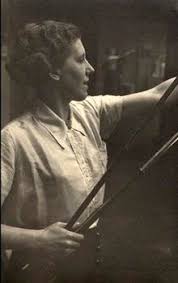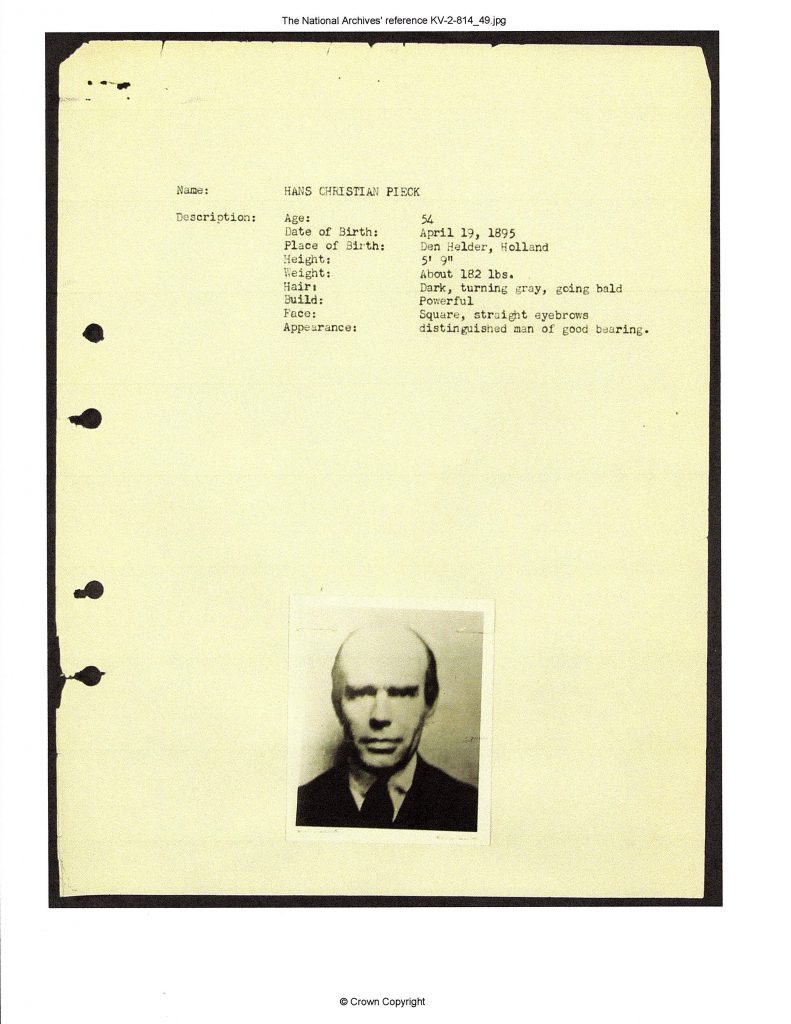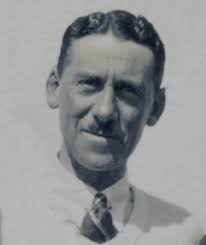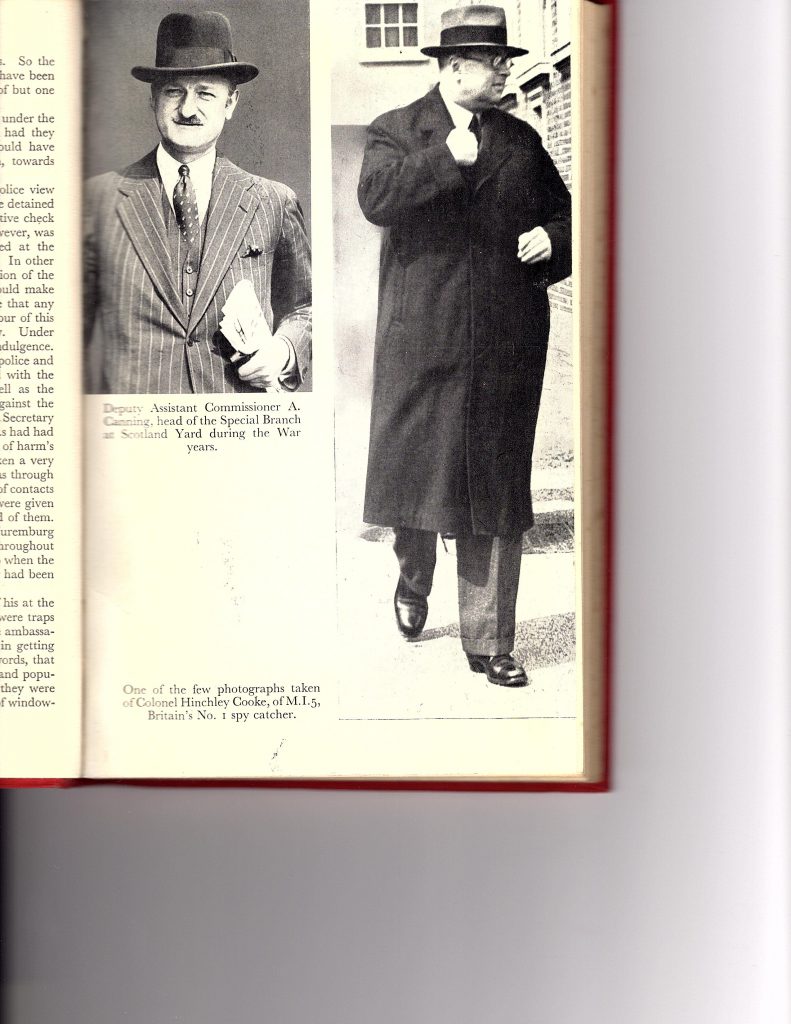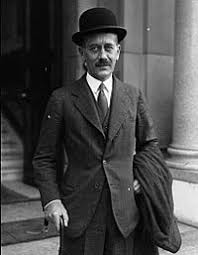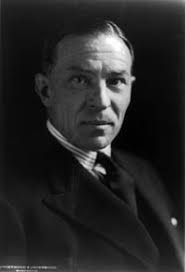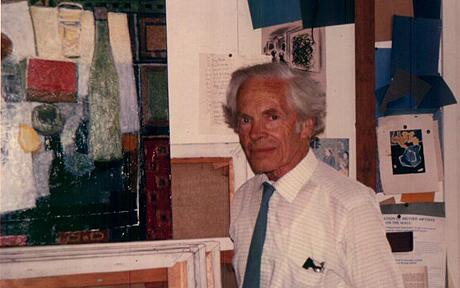[I am happy to report that the production of this column was only temporarily inconvenienced by the Hollywood Writers’ strike. I have been able to deploy instead a modified version of an AI Engine that has been carefully tuned to generate plausible conspiracy theories, a product called Conspirobot™. I trust readers will not detect any deterioration in service quality.]
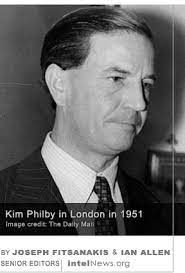
In this, the third in a series of bulletins that re-assess the careers of Kim and Litzy Philby, I explore the following question:
- How did MI5 and MI6 process the evidence of Philby’s treachery when he came under direct suspicion in June 1951?
Contents:
Introduction
Chronology & Sources
The White Interviews
American Pressure, and the Resignation
The Dog Days of Summer
Churchill Replaces Attlee
The Milmo Interrogation
Analysis, Outcomes, and Conclusions
Summary
Introduction
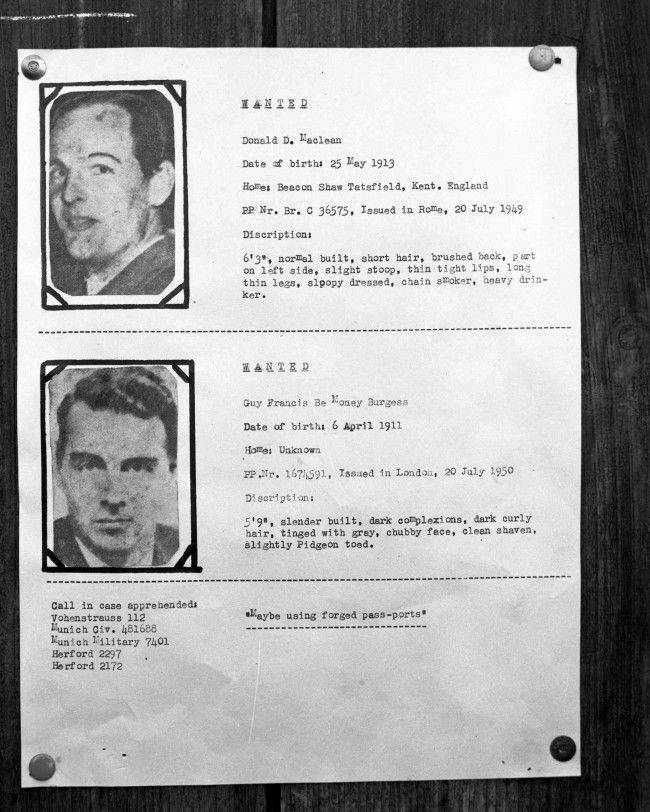
On May 25, 1951, Guy Burgess and Donald Maclean absconded in circumstances that suggested to the cross-departmental committee tracking the case (Strang, Carey Foster, Liddell, Sillitoe & White) that the pair had received advance warning that Maclean was about to be called in for interrogation. It is important to bear in mind the background to the event, namely:
- Dick White’s team had started investigating Kim Philby once the HOMER=Maclean equivalence had been made in April. Milicent Bagot then prepared a dossier on him.
- Burgess had been the intermediary between Philby and the latter’s handler, Makayev, based in New York. Philby then met Makayev himself, and insisted to him that Maclean should be exfiltrated. The KGB thus would have been able to contact Maclean through the London residency.
- MI5 acknowledged that Philby had known about the progress on the HOMER case since early January, but never considered the idea that Philby might have been communicating his knowledge about it to a Soviet controller in the USA.
- Philby’s final message to Burgess before he left the United States was that he ‘should not go too’, confirming that he was already promoting the notion of the exfiltration of Maclean.
- Burgess arrived in the UK on May 7, was met at Southampton by Anthony Blunt, and was seen meeting Maclean two days later.
- Blunt informed Yuri Modin (the KGB controller in London) on May 9 that the search for HOMER had narrowed down to three.
- Before Burgess absconded, the committee did not interpret his bizarre return to the UK, and subsequent activities, as anything harmful or suspicious.
- Modin wrote that a decision had been made on May 17, on the basis of the proposed May 28 arrest of Maclean, to exfiltrate Maclean (only) – something confirmed by KGB archives. He further stated that Anthony Blunt had been the prime intermediary between the spies and the KGB, but, for safety reasons, Burgess had on his arrival to take over as the sole link with Maclean.
- On May 24, a decision was made to defer Maclean’s interrogation to June 18, and it was thus no longer ‘imminent’, as the archival material at KV 6/143 confirms. (Chapman Pincher, Douglas Sutherland, Nigel West, Ben Macintyre, as well as the more respectable Robert Cecil, are among the authors who have promulgated the myth that, on May 25, Foreign Secretary Morrison approved a decision to move up the interrogation to the following Monday, thus precipitating the need to escape. Christopher Andrew coolly indicates that that was not true. In testimony to his biographer, Dick White likewise indicated that the interrogation had been deferred until the time of the hospital confinement of Mrs Maclean in mid-June. Morrison’s signature was purely for formal approval of the interrogation itself.)
- Blunt knew about Philby’s coded letter to Burgess, indicating that matters were ‘heating up’ in Washington, which arrived after the decision on Maclean had been made. According to Modin, it was Blunt who suggested that both Burgess and Maclean should go.
- Moscow ratified that decision, in order that Burgess could ‘keep Maclean out of trouble along the way’.
- Maclean was aware, because of clumsy surveillance, and documents being withheld from him, that the net was closing in.
- Despite his known links with the Comintern in June 1940, Burgess had never been suspected of being a Soviet agent until he disappeared with Maclean. Suddenly his antics in engineering a return to London were seen in a new light – a perspective actually encouraged by Philby himself.
- When he learned about the flight of Maclean, Philby was astonished to hear that Burgess had accompanied him.
- When Burgess and Maclean fled, Philby came under more intense scrutiny because of his friendship and association with Burgess in Washington.
- MI5 assumed that Philby must have continued to alert Maclean through some way of communication with Burgess, including the final notice of the ‘imminent’ interrogation.
- This implausible ‘fact’ – that he was suspected of abetting in their escape at the last minute – was added as the seventh and final point in the document passed to the Americans.
- Both White’s and Milmo’s interviews/interrogations of Philby were nominally focused on discovering how Maclean had been warned just before he was to be interrogated, not whether there was any indication of earlier leakage in the form of warnings concerning suspicions about Maclean.
- The enduring debate about the ‘Third Man’ has significantly focused on the identity of the man who alerted ‘Burgess and Maclean’, not simply ‘Maclean’. Philby had no idea that his Soviet masters planned to exfiltrate Burgess as well as Maclean. Indeed, they did not, at first.
In summary: Burgess had ample opportunity to warn Maclean. The KGB had been alerted beforehand. Soviet exfiltration plans had been in the works for a week before the event. The timing of the escape was arranged to pre-empt the originally scheduled day of interrogation. Maclean was, however, not imminently to be interrogated. No further leakage had been necessary. Philby was by this time out of the loop.
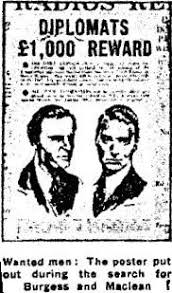
After the disappearance of the pair, Philby was recalled from Washington, and arrived in the UK on June 12, whereupon he was immediately invited to a series of interviews by Dick White, the head of counter-espionage in MI5. That same day, Percy Sillitoe, head of MI5, accompanied by Arthur Martin, arrived in Washington with the objective of soothing the troubled minds of the FBI and the CIA.
I refer readers to my articles from four years ago, https://coldspur.com/the-importance-of-chronology-with-special-reference-to-liddell-philby/ [the second half], and https://coldspur.com/dick-whites-devilish-plot/, for a detailed analysis of the events leading up to Philby’s departure, including the delivery by hand of a letter to him on June 6, alerting him that he would shortly receive a formal recall. I have supplemented that research with some fresh findings since then, such as the fact that Guy Liddell (deputy to Sillitoe) was on leave between June 3 and June 12, which helps to explain his general bewilderment as to what was going on. Given the misinformation that has circulated about the sequence of events, I hereby summarize the main facts:
- As early as May 24, a visit to Washington by Sillitoe had been planned for June 18-25, to coincide with the date of Maclean’s interrogation on June 18. The focus and objectives of the visit changed after the ‘two diplomats’ disappeared.
- White and Arthur Martin had in hand by the end of May a dossier on Philby, prepared by Milicent Bagot, the essence of which White related to MI6 chief Menzies, on June 4.
- This dossier had the appearance of being compiled as a result of the Burgess/Maclean absconding, but it is clear that MI5 had been working on it for some time before.
- MI5’s representative in Washington, Geoffrey Patterson, on May 29 agreed to an ‘ingenious scheme’ by White, and confirmed that he had sent information to the FBI.
- The decision that Philby was to be re-called was taken by Menzies on June 5: it was not because the CIA had considered him persona non grata, and had demanded his expulsion.
- Menzies and his deputy, James (Jack) Easton, then composed a letter for Philby that Drew carried to Washington that night.
- Not until June 6 did the FBI learn that one of the escapees was Maclean.
- On June 7, Sillitoe proposed that Martin join him on the visit to Washington to appease the FBI. The Americans had become very concerned about intelligence exposures, and even brought up the case of Engelbert Broda.
- On June 11, Sillitoe and Martin departed, carrying the document with the ‘seven points’ about Philby’s probable culpability. Martin handed the document to Robert Lamphere of the FBI on June 12.
- Lamphere passed the document to his ex-colleague from the FBI, Bill Harvey, now with the CIA, who was able to pass off the conclusions as his own when he handed it to the chief of the CIA, Bedell-Smith, on June 14.
- On June 15, Harvey provocatively informed Allen Dulles, the recently appointed CIA’s Deputy Director for Plans, that Philby could be ‘ELLI’, the Soviet spy in British intelligence identified by the defector Igor Gouzenko, a supposition that had been strangely omitted from the White/Martin dossier.
- On June 16, Dulles handed Harvey’s report to Sillitoe, who was ignorant of the original source of its allegations.
- Sillitoe and Martin returned to London on June 18, when Sillitoe passed on Harvey’s ‘revelations’, an event that reportedly enabled MI5 to compile a dossier. [!!]
- Bedell-Smith then wrote to Menzies, stating that Philby would no longer be welcome in Washington.
The main lesson is the fact that White was successful in diverting the main thrust of the challenge to Philby away from MI5 to the CIA, by virtue of the ‘seven points’ confided via Lamphere to Harvey. That ruse served to distract attention from any deficiencies on MI5’s part in not identifying any signs of treachery in Philby’s behaviour, helped to conceal the possibility of any London-based leakage, maintained MI6’s trust in its intelligence partner, and granted MI6 an external excuse for dealing with Philby. Yet the project was not without risk: while White’s memorandum stressed the Volkov affair, with which the CIA could well have been expected to be familiar, it also listed domestic events (such as Philby’s communism at Cambridge, and his cover-story with the Anglo-German Friendship Society) that had probably escaped the attention of the Americans.
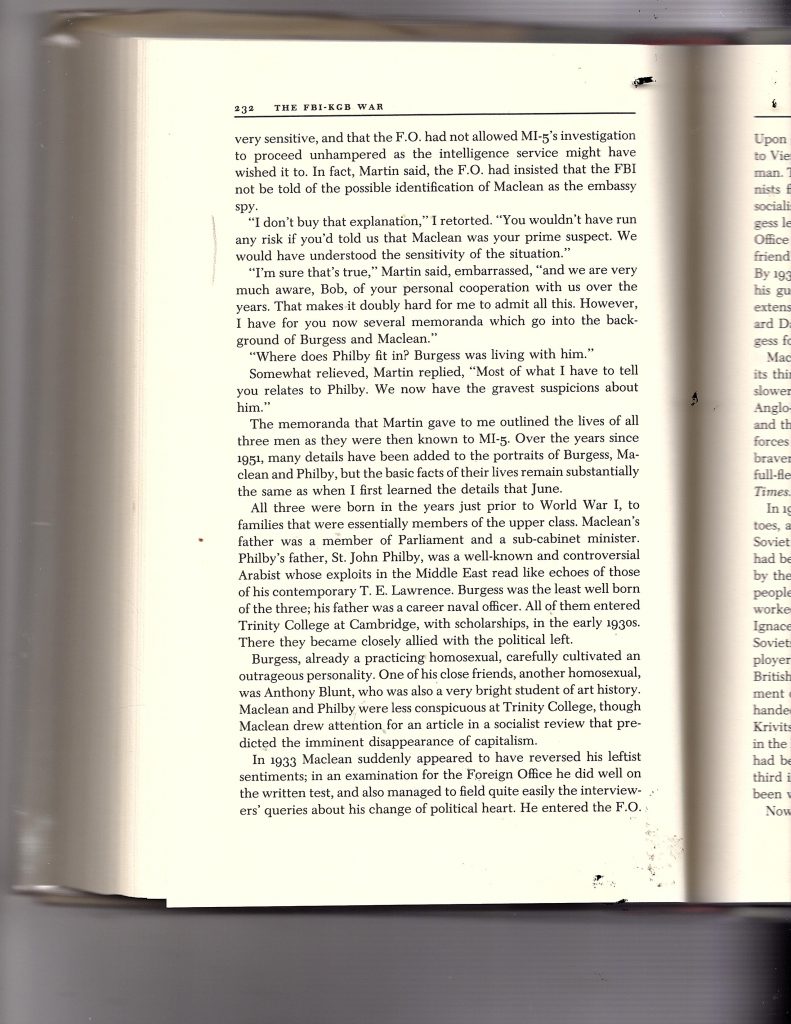
The fact that these two items could have been overlooked by MI5 was perhaps pardonable, but the third point – that Philby had married the communist Litzi Friedmann – was potentially dynamite, in that it might have uncovered a host of embarrassing incidents, which White presumably believed he could keep securely sealed. For instance, at that time Martin had most certainly not been indoctrinated into the fact that the informant known as Lizzy Feabre was Philby’s wife, which meant that he could be relied upon not to reveal any awkward secrets to the Americans. The fourth item mentioned Krivitsky’s pointer concerning the journalist in Spain, which was dangerously self-incriminating, as it would have been squarely in MI5’s court to investigate, and yet they had not acted. Moreover, the list omitted the Gouzenko reference to ‘ELLI’, a story which was very familiar to the Americans, and which troubled them greatly. That omission must have puzzled Bedell Smith and his team, and it would lead to some uncomfortable exchanges later that summer.
Chronology & Sources
Determining exactly what happened, and when, during this period is difficult, as the sources available are almost exclusively comments made by the slippery Dick White to his biographers, and asides from other MI5 officers. Philby’s memoir is almost devoid of dates, and should in any case be approached with caution. Guy Liddell’s Diaries can be considered (mostly) reliable, since they reflect an immediacy of response rather than a long-term memory, but there is some dissemblance in his observations. The first entry in File FCO 158/27 (the ‘PEACH’ Investigation) is disappointingly a memorandum dated as late as September 27, 1951. PREM 8/1524 (Prime Ministerial papers on the events) contains some useful background information. Christopher Andrew provides in Defend the Realm a narrow but reliable outline of events, exploiting the Mitrokhin archive, relying also on Yuri Modin’s testimony in My 5 Cambridge Friends, yet not using primary British sources. Very little archival reference is made in (for example) Tom Bower’s A Perfect English Spy, or Ben Macintyre’s A Spy Among Friends, beyond Liddell’s Diaries. Anthony Cave Brown’s biography of Menzies, “C”, displays conversations the author had with James Easton in Michigan shortly before he died: the latter’s reminiscences are probably authentic, but Cave Brown’s chronology is rather chaotic, and he struggles to organize his material convincingly.
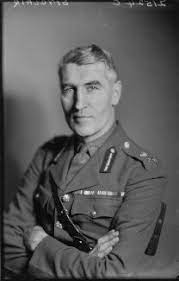
A rather sparse account of these events, complemented by generous extracts from the files, can be found in Chapter 6 of Nigel West’s Cold War Spymaster: The Legacy of Guy Liddell, Deputy Director of MI5 (2018), although Liddell’s involvement in the exercise was in fact minimal. In an astonishing lapse, West also presents ‘C’, the conventional title for the head of MI6, as being John Sinclair during the time of the inquiry, whereas Stewart Menzies was still in harness, and did not retire until 1952. (In 1945 Menzies had brought in two military intelligence officers: John Sinclair to replace Claude Dansey as deputy, and James Easton, who took over from Valentine Vivian, assistant-chief, in November of that year, while the latter was demoted to Chief Security Adviser to Menzies. Vivian retired early in 1951.) West’s book offers no archival references, but relies heavily on FCO 158/27 & 158/28. Unfortunately, he sometimes inserts names to fill redactions without explaining where or why he performs such services (as he does in his editing of the Liddell Diaries): he is probably correct in his emendations, but it is not a commendable practice. His representation of large redacted segments as a simple line of ‘XXXXXXXXX’ also does not perform justice to the size of such passages.
I present here a tentative time-line of the more solidly verifiable events of the second half of 1951, as a set of reference-points for the interested reader:
Jun 10 Prime Minister Attlee asks for details of careers of Burgess & Maclean
Jun 11 Carey Foster (of F.O.) distributes memorandum requesting secrecy over investigation
Jun 12 White conducts first interview of Philby
Liddell returns from leave
Jun 14 White conducts second interview: he asks Philby about Litzi
Sillitoe cables to ask whether he should reveal to FBI that Litzi was a Communist?
Sillitoe reports that CIA has declared Philby persona non grata
Jun 15 CIA’s Bill Harvey issues report on Philby (actually fed to him by White & Martin)
The report suggests that Philby could be ‘ELLI’
Jun 18 Sillitoe informs Attlee visit was a success, and Hoover was most co-operative
Jun 20 Bedell Smith informs MI6 that Philby must be dismissed
Jun 21 Morrison suggests setting up Cadogan Committee to investigate FO security
Jun ? Menzies tells Philby he will have to resign
Jun 26 Morrison states in House that Maclean had no access to technical information
Jun 27 White has agreed with SIS the form of memorandum to go to FBI
Jul 7 Menzies says Philby will have to be told the Americans suspect him of being ELLI
Menzies wants the case completed before Philby returns from leave
White recommends that Cussen or Milmo should conduct an enquiry
Jul 12 MI6’s Easton arrives in Washington: he tells Scott he is convinced of Philby’s innocence
Jul 13 Easton tells Hoover & Smith that Philby is guilty of nothing more than ‘indiscretion’
Jul 20? Easton returns to London: finds document that Menzies had withheld from him
Easton reads evidence of Philby’s bigamy, and nine other points
Easton challenges Philby over document’s claims: presumes Philby guilty
Easton presents conclusions to Menzies
Aug 4 Philby & Elliott are reported to be on vacation, yachting, in Chichester
Philby is reported to be very active in looking for a job
Aug 16 Liddell tells Patterson about his proposed visit to Canada and the USA
Aug 20 Liddell reports that Washington believes MI5 may no longer be investigating Philby case
Liddell explains it in terms of interrogation not being useful at this stage
USA urging GB to interrogate Philby immediately on Gouzenko & Volkov cases
Aug 27 White returns from leave
Sep 18 Philby officially resigns from MI6
Sep 19-21 Liddell is in Washington for meetings with the CIA
Sep 21 ‘H.A.R. Philpott’ reported as journalist in Spain, and decorated by Franco
Oct 1 Liddell returns from leave [!!]
Oct 1 Bedell Smith of CIA is told facts of Philby case were ‘chain of coincidences’
Liddell reports that case against Philby is ‘blacker’
Bedell Smith told Menzies MI5 identified Philby as man referred by Gouzenko & Volkov
Liddell says that that is ‘far from the case’
Oct 2 Edith Tudor-Hart is reported to have been involved in Russian espionage
Oct 3 Martin interviews Laemmel, MI5’s informant known as KASPAR or LAMB
Oct 13 Martin writes to Philby asking for information on Alice Honigmann
Oct 23 Philby explains his retirement from MI6 to Tomás Harris & Liddell
Philby claims he has been treated very generously: he has no recriminations
Oct 25 Conservative Party defeats Labour in UK Election: Churchill replaces Attlee
Oct 30 Mackenzie of Washington Embassy expresses doubts about Philby’s behaviour in May
Nov 27 Carey Foster of FO warns White of possible damage to Anglo-American relations
Nov 30 White’s report on Philby is submitted and distributed
Dec 3 Terms of reference for Milmo are issued to him
Dec 6 Reilly prepares brief for Eden: says ‘MI5 is ready for interrogation’
Dec 7 Eden expresses deep concerns about Philby case, but is unaware of White interviews
Liddell informs Churchill that all possible inquiries have only just been completed
Churchill orders interrogation to occur at once
Dec 10 Liddell tells Burt of cumulative effect of evidence
Dec 12 Interrogation of Philby by Milmo takes place
Philby denies that any of his previous statements were falsehoods
Dec ? Milmo issues detailed report, concluding that Philby is guilty
Dec 18 White has completed his draft report for Americans on Philby
Dec 21 MI6 starts counter-attack on Milmo’s findings
Dec 28 Philby is encouraged to comment orally on his previous falsehoods
Dec 31 MI6 & MI5 to send agreed viewpoint on Philby to FBI & CIA
Martin has made extremely good analysis of position: heavy burden of guilt
Plan for White to take memorandum to FBI & CIA on January 14
Several broad conclusions can be drawn from these items:
- A song-and-dance was being undertaken on the report into Philby. It had essentially been completed before June, but was not actually released until the end of November. MI5 pretended to the Foreign Office that the discoveries were all new, while White’s report did not disclose fresh findings unearthed during the summer.
- MI5 had obviously been in close communication with MI6 throughout, and the presentation of the report to Menzies on November 30 would have been no surprise.
- White continued to dissemble, presenting his personal submission to Menzies of his report as an act of courage.
- MI6 was both in denial and in panic. Under pressure from the Americans, they forced Philby’s resignation at the same time that Easton was telling them Philby was innocent.
- Philby’s resignation occurred more than two months before the official report was submitted.
- The arrival of the new government under Churchill in October 1951 may help to explain the sudden change in the course of events in November.
The White Interviews
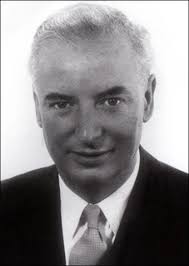
During the six months after Burgess and Maclean disappeared, MI5 undertook, on the assumption that there had been a last-minute tip-off, a frequently hesitant inquiry into Philby as its possible source. The process (the ‘PEACH’ case) started immediately after Philby returned to Britain on June 12, when he was asked ‘to help with the inquiries’ into the disappearance of Burgess and Maclean, and underwent three interviews, in quick succession, carried out by Dick White. Since we are dependent almost exclusively on the memoirs or communications of the two participants (with some added commentary from Guy Liddell) for a record of what happened, it is useful to summarize how they each presented the events before I attempt to put the confrontations in context.
Philby had prepared thoroughly for the encounter, since a handwritten letter from Jack Easton had alerted him to the reason that he was being recalled – as if he had not been able to guess it. Easton’s precise role here is uncertain: at this stage he was probably less informed about the background material, least of all the Litzi business. Philby interpreted the message as a friendly warning. Easton was present at the subsequent interviews carried out by White (of which Philby claimed there were ‘several’), but White was not a practiced interrogator: he tried to be friendly, wanting help in ‘clearing up this appalling Burgess-Maclean affair’. Philby prevaricated and distorted the truth, but when openings cropped up, such as the question of the funding for Philby’s first trip to Spain, White failed to follow up his line of questioning. Philby wrote little more about what else was discussed, and concluded his account by describing how he was summoned twice by Menzies, once to be told that Bedell Smith had declared him persona non grata in Washington, and then to be informed that Menzies would have to ask for his resignation. He would be given £4000 in place of a pension. Both events are undated: Philby also misidentified the source of Bedell Smith’s intelligence as William J. Howard when it should have been Daniel Harvey.
As for Dick White’s testimony, Tom Bower (White’s biographer, who inherited substantial notes from Andrew Boyle), relates how White had beforehand visited John Sinclair of MI6 in Broadway Buildings to ‘discuss the unprecedented MI5 questioning of a senior SIS officer’, and how Sinclair had grudgingly agreed to the request. At that stage, White gave the impression that suspicions about Philby barely existed, and that he and Martin were therefore about to start out on their task of research. In light of the chronology given above, it is clear that the idea that a fresh MI5 project allowed it to uncover dramatic new information on Philby was a fiction.
But what shocking information they uncovered! As Bower records:
There was the discovery that Philby’s first wife, Litzi Friedmann, was an Austrian Communist. In 1946, White had been asked by SIS to check on Litzi after Philby had applied for permission to divorce his youthful transgression. White had been told by Klop Ustinov that Litzi was a Soviet agent, but that had not been held against Philby.
(Of course, Bower gives Seale and McConville as sources for this revelation.) But that was no ‘discovery’, if White had been informed of it back in 1946. And Philby did not need ‘permission’ to get his divorce: what he had to do was face the music of informing his boss at MI6 that he was still married to Litzi. Moreover, that factoid was one of the points expressed in the dossier already sent over to the CIA. One can already detect the clumsy attempt at covering up traces, and the absurd pretence that the senior officers in MI5 had known nothing about the Litzi Feabre nonsense.
White described his tactics as relying on ‘an element of quiet probing and deceptive gentleness’, as if his prey would have been easily susceptible to such charms. He quickly concluded that Philby was lying, but he lacked the patience and guile to trap him. According to Bower, White then submitted a report to Menzies ‘which concluded that Philby was suspect’. That precise report (which may have been delivered orally) has not seen the light of day, and it is significant that White’s final version of it was not presented until November 30 – a phenomenon that I shall analyze later. The judgment on Philby’s possible culpability seems very tame: Philby was suspect when he was brought in, and clearly incriminated even more deeply by the time White had finished. Yet Bower appears to have been taken in by White’s claim that he showed great courage in confronting the MI6 chiefs with his suspicions, a dishonourable performance since it was he who had arranged for the indictment that he and Martin had prepared to be used as evidence for Menzies from the CIA.
The last source is Guy Liddell, who was listening in to the interviews (and had only that day returned from leave, it should be recalled). He failed to find Philby convincing when the latter was asked about the Volkov affair, and at the second interview, when White started asking Philby about his first wife, Liddell recorded:
Dick then questioned him about his first wife. He said that he had married her in Vienna in about 1934, knowing that she was a Communist, but that he had subsequently converted her. His marriage had broken up in 1936 and, so far as he knew, she was no more than a left winger. He had himself never been a Communist, but his sympathies with the left had been strong when he married his first wife in 1934.
Liddell felt uncomfortable about revealing this information to the CIA. Sillitoe had just cabled from Washington asking for guidance as to when he should reveal to the FBI that Litzi had been a communist, and Liddell dithered, writing:
We have, therefore, left the decision with the D.G., emphasising that if he feels it necessary to communicate this information now, he should make it clear that no proper assessment of Philby’s position has so far been possible, and that they should not prejudge the issue on the information about his former wife. This is to be subject of C’s approval, which we cannot get until tomorrow.
This whole exercise was thus something of a charade. Yet a fresh interpretation jumps out. Menzies may well have been convinced of Philby’s guilt, and thus become party to White’s plot, before Kim arrived in London. He and White could have decided that, by encouraging the CIA to demand punishment for Philby’s transgressions, it would provide a useful external alibi for what had to be done. Menzies and White both knew about the Litzi-Honigmann business, and must have started to experience horrifying suspicions that they had been utterly hoodwinked by Philby, and that his career with MI6 since 1941 had been a chapter of disasters. Thus Menzies dutifully followed what Bedell Smith advised him to do – dismiss Philby. By that action, Menzies and White probably believed and hoped that the problem would die away. But the events show that the newly appointed deputies to Menzies, Sinclair and Easton, were going to become the flies in the ointment, not having been directly exposed to the shenanigans of 1946. One (Sinclair) remained a staunch believer in Philby’s innocence, the other (Easton) soon felt betrayed by the fact that part of the Philby dossier had been withheld from him, and he became convinced of Philby’s guilt. In their different ways, they would both exert a significant influence on the evolution of the case.
American Pressure, and the Resignation
The ‘negotiations’ of Philby’s resignation (if they can be considered such) are worthy of comment. Menzies ‘asked’ for Philby’s resignation, the implication being that, if he did not do so, he would be fired, presumably for conduct unbecoming an intelligence officer, or because he had lied about his past. One might expect an innocent man to protest violently at the ruination of his career, but Philby did not do so. He not only knew he was guilty: it was evident that his employer had enough evidence to condemn him, even though none of it would stand up in a trial – a procedure that MI6 would be very reluctant to engage in because of the publicity and the possibility of a negative result. After all, Philby had not actually been caught in the act of handing over privileged material to a foreign power, and he had resisted pressure to confess.
Yet letting the man loose had its problems, too. MI6 could hardly expect Philby to put a convincing spin on the termination of his career, and his friends would ask questions. Those in the United States and in the United Kingdom who were convinced of his guilt would demand to know why he had been allowed to get away, and ask questions about unresolved aspects of the case. And those who believed that he had been set up as a scapegoat for the Burgess/Maclean fiasco would make protestations about an innocent officer’s being lost from the service. In fact, all three reactions occurred, which meant that the matter could not be buried quietly.
The actual date of the agreement is elusive. As I showed, Philby himself indicated that it occurred very soon after the White interviews, in June, and that he thereafter spent the whole summer house-hunting. Cave Brown had the encounter occurring at the end of July or the beginning of August. Nigel West bizarrely presents it as happening in November. The argument in favour of Philby’s account is defensible, since Menzies would have needed to respond quickly to American pressure. In his book The Agency, John Ranelagh wrote that Bedell Smith accompanied the Harvey report with a cover letter to Menzies that stated: “Fire Philby or we break off the intelligence relationship”.
Yet other evidence at first suggests that the process was more drawn out. The discussion in July over the ‘ELLI’ question, and White’s continued process of investigations, suggest that Philby’s fate might still have been in the air, with Menzies possibly having second thoughts: he expressed a desire for the case to be completed before Philby returned from leave. Easton’s trip to the United States at that time to inform the CIA that Philby was guilty only of ‘indiscretions’ is difficult to explain if the traitor’s disposition had already been decided, although it would have constituted a tactless response on Menzies’s part after Bedell Smith’s forthright threat by letter. The fact that Philby was recorded by Liddell as being on holiday in early August, ‘looking for a job’, might indicate that the agreement had only recently been made, and the timing of his resignation taking effect only on September 18 would support the Cave Brown thesis, with Easton’s memory being judged more reliable than Philby’s.
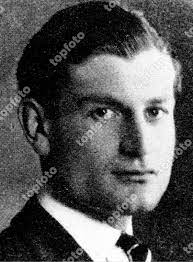
The truth is probably more complicated, and the archive is ambiguous. Philby’s account appears to be superficially correct. A memorandum written by Carey Foster on December 11 specifically states that Philby’s employment was ‘terminated’ in June,’ because of his close association with Burgess’ (a euphemistic way of representing Philby’s culpability). Perhaps he was given three months’ salary, which might explain the September 18 ‘resignation’, the record of which also appears in the PEACH archive. But other events suggest that Menzies issued some kind of suspended sentence, and awaited the results of further research before confirming his decision. These events include the bizarre mission by Easton to Washington.
As the news spread around Washington in late June, pressure started to be applied to the MI6 outpost in the British Embassy, with questions being asked as to whether Maclean had had access to technical information on atomic weaponry. The Foreign Office had to arrange for a question to be asked in the House of Commons whereby the new Foreign Minister, Herbert Morrison, could deny any such knowledge on Maclean’s part. (His predecessor, Ernest Bevin, had given up the post in March, owing to ill-health, and had died a month later.) Moreover, the CIA persisted on the ‘ELLI’ business, which White’s memorandum had naively overlooked. Liddell recorded in his Diary (July 7) that Menzies had judged that Philby would have to be told about the American’s belief that he could be ‘ELLI’, and would even have to explain to the Americans why he was not ‘ELLI’ – a quite absurd proposition, given the murkiness behind the rumour. Of course Philby would not have been able to do anything about it, but it helps to suggest that his fate was still undetermined at this stage, and that Menzies was not fully committed to firing him. It was now that Dick White determined that he had to bow out of the investigation, since he believed that the ‘ELLI’ and Volkov cases were outside his purview (mistakenly, of course, with ‘ELLI’, since the defector had made his assertions on Commonwealth soil). White recommended that Edward Cussen (who had interrogated P. G. Wodehouse) or Helenus Milmo should conduct an inquiry. No doubt he felt the heat around him.
In mid-July Easton was sent to Washington to calm things down. In the words of Cave Brown (who interviewed Easton in early July, 1986):
At that point [vaguely defined, in Cave Brown’s narrative] “C” decided to send Jack Easton to Washington to see Bedell Smith. But he did not tell Easton about Goldsmith White’s communiqué, nothing about Philby’s involvement in the Volkov affair (Easton had joined SIS afterward), and he enjoined Easton to take the boat to the States rather than fly. He further instructed Easton to tell nothing more than that Philby was ‘guilty of nothing worse than gross indiscretion, but that an inquiry was being instituted into all aspects concerning him’. Indeed, “C” appears not to have been as alarmed as those around him.
This is all very weird, and does not sound authentic. Admittedly, Easton was known and well-respected in Washington, but for Menzies to send him as an emissary with such parsimonious information, on a slow boat to China, while at the same time concealing vital information from him, would have been a colossal misjudgment. Simply because Easton joined MI6 after the Volkov affair was no reason for him not to have been briefed on it, or not to have read the reports. Moreover, Easton had been present at White’s interviews with Philby, so how could he claim such ignorance to Cave Brown? I think it much more likely that Easton was already familiar with the other nine points of the communiqué, but that, on his return, a major assertion about Philby’s marital status stunned him. To mix metaphors, it is much more likely that Cave Brown simply got the wrong end of the stick than that Easton was trying to pull the wool over his eyes. Nevertheless, Washington seemed appeased, and Easton sent a signal to Menzies advising him not to take any action against Philby until he returned – a clear indication that Philby’s fate was still up in the air.
For some reason, on his return, Easton contacted his predecessor, Valentine Vivian, and probably through him discovered an expanded version of the seven-point report compiled by White. This contained many of the familiar claims against Philby (from Litzi’s communism to the gatherings at Bentinck Street, from Burgess to Volkov), but was headed by an astounding, fresh assertion – that Philby’s marriage to Aileen Furse had been bigamous. (The ten points of this document are reproduced in a tight summary in Cave Brown’s book, suggesting that Easton had maintained a copy rather than relying on memory.) It was this finding that appeared to anger Easton the most, as he recalled the occasion when Philby had responded to his congratulations on the birth of his latest child, now shown to be out of wedlock. It confirmed his impression that Philby was a cad, ‘an accomplished liar . . . capable of anything’. Most of all, Easton felt that his professional integrity had been attacked, since he had been called upon to lie to the Americans.
Now this revelation may not come as a surprise to coldspur readers, as I expressed my bewilderment last month over the indulgence of the Chelsea Registry Office in so casually accepting the fact of Philby’s divorce from Litzi. So perhaps it never happened? And thus the Georg Honigmann-Litzi Friedmann/Philby marriage was likewise bigamous? While the comrades might not have concerned themselves unduly with such bourgeois matters, the whole exercise provoked Easton (who had been assigned the Philby case by Menzies) to haul in Philby for another inquisition, where he challenged him about several of the points – including a telling item about ‘the revelations concerning Lizzy Friedmann’s [sic] associations with a Soviet agent in Germany’, which suggested that a garbled version of the Honigmann business had found its way into the chronicle. He asked him about his bigamous marriage: Philby apparently did not deny it. He had no answers to Easton’s questions. Easton told Cave Brown that ‘he looked and behaved like a rat in a trap. I let him go. But his attitude was such that everything being said against him was true and therefore a strong presumption of guilt against him’.
What is disappointing about this account is Cave Brown’s inability to follow up with incisive questions: he appears to be overwhelmed by the material, and can be considered the journalistic equivalent of Arthur Martin. To start with: in what circumstances was the fact of Philby’s bigamy discovered? When did it occur? Who knew about it? Did anyone at the Kim-Aileen ceremony in September 1946 bear false witness? Why was Tomás Harris listed as the only witness when we now know that Flora Solomon – and Frank Birch – also attended (see KV 2/4634)? Did Philby truly not admit that he had never divorced Litzy? And did Easton (who clearly knew about the Honigmann business) ask Philby why he had not arranged his divorce in that summer of 1946 before Litzi left the UK for good? (It is possible that Easton was ignorant of the events of the summer of 1946, and believed that Philby had bigamously married Aileen much earlier: after all, she had changed her name by deed poll.) In any event, Easton then presented his findings to Menzies – it could not have been a comfortable encounter – and soon Menzies realized the seriousness of the situation, and came to grips with his earlier decision that Philby would have to be dismissed. Bigamy was a crime, unlike adultery, and provided solid grounds for dismissal. Thus Philby could be relied upon not to spill the beans about the true cause.
What is also extraordinary about this revelation is that it was Easton alone who provided it, thirty-five years after the events, a few years before his death in 1990. One might have expected someone else to have leaked the secret during that time. So was Easton the only officer who knew about it? Would John Sinclair and his cohorts have been such enthusiastic supporters of Philby had the shocking news been revealed to them?
The Dog Days of Summer
Events moved in a desultory fashion that summer. No doubt many of the leading figures had to take their vacations, holidays and leave. As early as June 11, Carey Foster, the Foreign Office’s Security Officer, had requested other government departments to refrain from commenting on issues related to Burgess and Maclean, as he wanted the Foreign Office itself to handle any communications. Ten days later, the Foreign Secretary, Herbert Morrison, recommended setting up a committee to review Foreign Office security. The Prime Minister, Clement Attlee. approved, but when the group met under Alexander Cadogan’s chairmanship, members were kept in the dark as to the investigations into Kim Philby, with Dick White appearing at one of the meetings to help obfuscate the situation.
One might conclude that, with Philby’s resignation sealed, White and Menzies would have imagined that the troublesome case would quietly die down. After all, the destination of Burgess and Maclean was unknown. Attlee’s administration did not apply any pressure, since the possibility of a ‘Third Man’ had been concealed from them, and Attlee was constantly looking over his shoulder at his Left Wing, sympathetic to the Soviets. White had kicked the ball into the long grass by abdicating any responsibility for looking into the Gouzenko and Volkov cases. Yet the pot started to be prodded from both sides.
Kim Philby’s greatest friend and ally, Nicholas Elliott, had in June returned to the UK from Bern, Switzerland, to take up a new position in MI6. Liddell refers to a visit that Elliot paid him on June 16 (his name is redacted, but the identity is unquestionable), indicating that Philby was using him to determine where he stood:
Xxxxxxx xxxxxxx came round to see me. Telephone checks had indicated that he had rather got his ear to the ground in S.I.S. and was trying to find out for Kim where the latter stood. He did not, however, attempt to pump me and prefaced his remarks by saying that he knew nothing whatever about the case.
Apart from the ominous reference to telephone-tapping, this was relatively harmless, but Elliott would increase the volume during the following months, especially when Philby felt badly treated by the Milmo interrogations. In the gloom of his betrayal, Elliott’s 1991 memoir Never Judge A Man by His Umbrella clumsily finessed his whole campaign to defend Philby. Ben Macintyre describes Elliott’s efforts in the following terms: “Within MI6 Elliott swiftly emerged as Philby’s most doughty champion, defending him against all accusers and loudly declaring his innocence”, but the author provides no sources for his claims.
The pressure from the accusers annoyingly arose in Washington, where some niggling interest endured, and Guy Liddell gave the impression that it was his job to quell it. On August 16, he informed Patterson that he intended to pay a visit to the USA and Canada, and his diary entries at the end of August (when White was on leave, and Liddell therefore had to take over) indicate that the CIA was expressing disappointment at the speed of the inquiry. Liddell had to explain that it was not useful to attempt to interrogate Philby over Gouzenko and Volkov, since MI5 was still gathering information. The outcome was that Liddell did indeed visit Washington between September 19 and 21, although we have to draw on CIA records for this information, as Liddell gives no indication of the mission in his diaries, rather naively reporting that he returned from leave (again!) on October 1.
Liddell’s task was not eased by the political rivalry between the FBI and the CIA. (In October, Hoover came to be very annoyed on learning that Menzies had explained VENONA to Bedell Smith, and he let Geoffrey Patterson know of his ire in no uncertain terms.) On August 9, Liddell wrote:
I saw Patrick Reilly and cleared with him, and subsequently of SIS, a letter which the D.G. is sending to Hoover, suggesting the indoctrination of Bedell-Smith into basic material connected with the MACLEAN case. In spite of the fact that Bedell-Smith is Chairman of U.S.C.I.B., the equivalent of SIGINT, he is unaware of the source of our information. [VENONA: coldspur]. This causes his subordinates to worry about S.I.S. and ourselves with wild theories about the disappearance of BURGESS and MACLEAN.
Three days later, he records how the FBI was demanding more stringent interrogation of the suspect based on ‘more sinister allegations against Philby arising from both the Gouzenko and Wolkov [sic] cases’, and Liddell again had to temporize by replying that MI5 was still making exhaustive inquiries.
As summer turned into autumn, the investigation picked up again. What further inquiries were being made at this stage is unclear, and it took until October 1 for Liddell to acknowledge that the case against Philby was now ‘much bleaker’. (His diary for the whole of September is blank.) By now, evidence of Litzi’s multiple travels to the Continent in the late 1930s has come to light. “The inference is that she was then acting as a courier. These facts were never revealed by Kim, although they must have been within his knowledge.” And then, Liddell responds in a provocative fashion to an observation by Bedell Smith, who had apparently told Sillitoe ‘that he thought that MI5 were now confident that Philby was identical with the man mentioned by Gouzenko and Wolkov.’ Liddell’s comment runs as follows: “This is of course far from the case.”
Now this statement could be interpreted in many ways. It could suggest that the figures identified by Gouzenko and Volkov were confidently not identified as being the same individual – a simplification encouraged by the two-dimensional American mind, and abetted by inadequate knowledge. It could serve simply to deny MI5’s confidence that Philby was either ELLI, or Volkov’s counter-intelligence officer. It could imply that MI5 had excluded the possibility that Philby could be one of the pair – perhaps because the ELLI business had already been solved and put to bed. But why ‘of course’? It indicates that certain facts of the case were widely understood and accepted by Liddell and his colleagues. Above all, it suggests that MI5 in general was still very uncertain as to how it could handle the Americans’ persistent objections and inquiries about Philby.
A remarkable new set of items of information arrived, beginning at the end of September, which suggested that further investigations were being taken a little more seriously. The first has a humorous angle. It consists of a memorandum sent by an A. G. R. Rouse, from within the Foreign Office, to Carey Foster of the Security Department, dated September 21, and headed: ‘British Journalists Attached to the Franco Side During the Spanish Civil War’. The writer apologizes for the delay in responding, but he has evidently been making discreet inquiries via Chatham House while avoiding any direct approach to the Times. His main conclusion runs as follows: “There was, however, a British correspondent by the name of H. A. R. Philpott who was evidently decorated by Franco, but we have been unable to trace what paper he represented.”
Apart from the mistake over the name, the obvious question is: what took MI5 so long to trigger this request? It should clearly have been made in February 1940, after the interrogation of Krivitsky, and not as the outcome of an afterthought in the summer of 1951. Yet I offer a darker interpretation. If this disclosure was made only in September 1951, how was it that a confident expression of the connection was able to be made in the dossier of May? It suggests again that the link had been identified earlier, soon after the Krivitsky interrogation, but put into abeyance because of the belief in Philby’s new commitment, until the suspicions about him surfaced at the end of the decade.
Further items followed. On October 2, Edith Tudor-Hart had been interviewed, and admitted to having been involved in Russian espionage, thus casting the spotlight again on her close friend, Litzi. The following day, Arthur Martin conducted his infamous interview of Laemmel, MI5’s informant known as KASPAR or LAMB, which I tried to dissect in my March posting, and cleared up last month. This interview can be interpreted to show just how ignorant or confused Martin was, despite the fact that, according to Liddell’s diary entry of August 20, ‘Martin knows his cases inside out and backwards’. Martin’s bizarre behaviour was then further exemplified by a letter he wrote for the attention of MI6 on October 13, probably to Kim Philby, apparently unaware of the fact that his target had resigned some time ago. He asked for information on Alice Honigmann, revealing that he knew that she had been married to ‘a British subject’ in 1934, but thereby failed to help his addressee at all, since he omitted providing the husband’s name. The text suggests that he had no idea that the new bride of Georg Honigmann had actually been married to (and maybe was still legally entwined with) the subject of MI5’s continuing inquiries, and he makes some clumsy mistakes about the Honigmanns’ marital status. It is at first difficult to determine whether Martin was being stupid, obtuse, or simply devious.
Yet this document strikes me as being a classical example of the ‘Genuine’ but ‘Inauthentic’ article. It is Genuine, because it is correctly dated and authored, and appears in a context that looks realistic, but the letter is patently Inauthentic. Its insincerity is obvious in many ways: the name of the addressee has been redacted, but the suffix of ‘Esq., O.B.E’ has been disingenuously left in place, betraying a clear clue to whom the letter was sent. Martin may or may not have had the facts of Philby’s dismissal explained to him, but the impression he wants to give is that lowlier officers in MI5 like him have properly been kept in the dark. He also pretends to show ignorance of the full history of Lizzy Honigmann, thus not providing full help to the person whose help he is requesting, even though the record of his interview with LAMB a few days before proves that he knows a lot more. And finally, he displays a foggy but very revealing understanding of the marital status of the Honigmanns, first claiming that Litzi lived with Georg until 1946 (i.e. in an unmarried state) ‘when they both left the UK’, next indicating that Litzi ‘joined her husband in Berlin’, before stating that ‘it is believed that the Honigmanns married after they arrived in Berlin’ (clumsiness, simply confusion, or another example of deliberate obtuseness, perhaps?). It all sounds like an awkward put-up job engineered by his supervisor, Dick White, to furnish evidence for the historical record that MI5 was performing its due diligence.
Liddell was actually groping around in the dark at this time, trying to put his finger on the core of the communist conspiracy, all the while blissfully unaware of how he had been betrayed. A telling diary entry of October 22 shows how he had had a private talk with Anthony Blunt, of all people, and had sought insights from him about Burgess’s motives for ‘going away’– like Joltin’ Joe DiMaggio, presumably. He also had a private discussion with Victor and Tess Rothschild, believing them to be loyal and honourable allies, and Tess tried to distract attention from herself and her husband by pointing to ‘a girl who was formerly a secret member of the Party, but has had, she believes, nothing to with it for ten years’. (How she knew that fact so intimately did apparently not cross Liddell’s mind.) He wrote: “I do not know to whom she is referring, it may be xxxxxxxxx’s wife’ [probably Jenifer Hart, Herbert Hart having been being a respected member of MI5 during the war]. Liddell then reflected:
Tess would be willing to put us in touch with this person, provided it were possible that the information did not go further than Dick and myself. I said that one of the difficulties we were up against was that we had had to revise our opinion about these [sic] sort of people. Formerly we had been inclined to take the view that those who had committed youthful indiscretions and had not showed up in the records for ten years could now be regarded as cleared, but in the light of recent experiences we have had to revise our views.
Indeed.
Yet what probably changed the course of events dramatically was the fact that Prime Minister Attlee called an election for October 25, but lost it. The Tories returned to power, under Churchill’s leadership, with Anthony Eden resuming his post as Foreign Secretary.
Churchill Replaces Attlee
It apparently took several weeks for the new administration to concern itself properly with the PEACH case. When Liddell accompanied Sillitoe to the offices of Prime Minister Churchill and Foreign Secretary Eden on December 7, he observed that Eden did not have a good insight into what had been happening, and what the strategy was, recording:
Eden was worried about the PHILBY case; he had evidently been extremely badly briefed and had given the P.M. the impression that PHILBY might escape at any moment and that another scandal would ensure similar to that in the case of BURGESS and MACLEAN. The D.G. explained that on the fact [sic] of it this was not at all likely. Eden was evidently unaware that PHILBY had already been interrogated three times, although not quite on the lines of the proposed interrogation which is to take place on the 19th December, on the basis of a number of subsequent enquiries.
Liddell was displaying a good deal of disingenuousness here. After all, the Foreign Office, in the shape of Carey Foster, had done its best to cast a veil over the whole affair, and MI5 was historically not known for its candour with its political masters. Only eighteen months beforehand, in the wake of the Fuchs business, Liddell and White had persuaded Sillitoe to lie to Prime Minster Attlee over the checks that had been carried out on Fuchs’s communism, with the result that Sillitoe had given them a severe dressing-down over putting him in that position. Moreover, Liddell confessed in his diary that he had claimed to Eden that ‘all enquiries which seemed possible had only just been completed’, to which a more competent and alert Foreign Secretary might have riposted: “What is taking you so long?”
Indeed, MI5 must have been sensing some pressure, as White’s dossier had been ‘circulated’ (to whom is not clear) on November 30. Liddell’s comment on Eden’s being left in the dark is ambiguous (Did he not know that Philby had been interrogated at all? Or was he in ignorance that as many as three interviews had taken place?). Yet, since the White report states clearly that Philby was ‘interviewed on three occasions’, it seems safe to assume that Eden had not been granted the favour of being able to read the report for himself. Surely, if he knew of the existence of such, he would have asked for a copy.
The introduction to White’s report is worth quoting in full:
Ever since the disappearance of Maclean and Burgess the Security Service have been making a study of all available evidence in order to find out how Maclean was alerted just before he was going to be interrogated.
This is a carefully crafted deception. The study had started before the disappearance. It was an inquiry into the probability of Philby’s general guilt, not the specific event of an ‘alert’ to Maclean. The implied immediacy of the interrogation was a lie.
This MI5 dossier listed several items that appear in my catalogue of lapses in last month’s coldspur, citing them as evidence of Philby’s mendaciousness (‘PEACH’s statements are false’). They include his status with the communist Litzi, his relations with Burgess, and his own political views. It then goes on to list ‘information from the Russian defectors and Intelligence sources’, namely (i) the Krivitsky testimony, (ii) the Volkov disclosures, (iii) the changes to the Soviet cypher system, (iv) Philby’s ability to inspect a telegram to Washington (on May 16) concerning the date of the Maclean interrogation (projected then to be ‘immediately after May 23’; and (v) the probable acquaintance of Philby and Maclean when at Cambridge. One notable omission from this list is the Gouzenko pointer to a spy known as ‘ELLI’ in the bowels of the Intelligence Services. Again, one has to wonder whether this was because ELLI had already been accounted for, or because the exposure was too monstrous to admit. Given the Americans’ perpetual interest, I would support the former theory. It also fails to report the fresh revelations about Litzi’s travels in Europe which Liddell referred to in his diary entry for October 1.
The objective of the report, however, was apparently not to make a case that Philby had operated for any length of time as an agent for the NKVD/KGB, but to determine whether or not PEACH was ‘the most likely person to have been responsible for alerting Maclean’. (Note the subtle change from the introductory language: Philby had of course alerted Maclean to the HOMER advances.) And White offered the information that the Security Service had reached the conclusion that it was indeed PEACH who was responsible (how else would that derive, except from him?), stating that he had ‘studied all the evidence’ and agreed with that conclusion. But of course White had done no such thing. He had apparently never considered any other possible leakers (such as Blunt), and ignored the fact that Philby, working in Washington, was surely not best situated to control the course of events. He had of course suggested that Philby was able to intervene only as late as May 16, when he saw the telegram. Moreover, a mass of relevant information that had either been known about for some time, or had been uncovered in the period since (such as the whole Honigmann business) had been omitted from the report.
Rather ingenuously, however, the White/Martin report does not examine how Philby was able to evade any investigation at the time of the various events, a point that I shall re-examine later. For instance, the following text appears, concerning Krivitsky’s evidence:
In all respects, therefore, PEACH fulfils the description given by Krivitsky. So far as can be ascertained no other journalist accredited to Franco Spain does.
Anyone with any sense of the political background who came across this sentence should have reacted with dismay, even rage, since it reflects dire incompetence on the part of MI5. Nevertheless, Carey Foster was highly positive when he read the report: “I have read your dossier on PEACH which I think has been extremely well assembled.”
Churchill and Eden, presumably basing their judgments on a précis of the report, were less patient. Eden and his Permanent Under-Secretary of State, William Strang (who had been serving in that role since 1949) believed, according to Liddell, that further interrogations would lead to prosecution – an observation that would suggest that Carey Foster had not been keeping his boss Strang (a nasty piece of work, by the way) properly informed of MI5’s deliberations. Somewhat hastily, Prime Minister Churchill ordered that a more rigorous interrogation be undertaken immediately. He and Eden would be visiting Washington in the near term, and they wanted to be able to deal with the case then, whatever the outcome. Helenus (‘Buster’) Milmo Q.C., who had already been selected to perform a more severe examination of Philby on December 19, was ordered to start it a week earlier.

The éminence grise behind the strategizing was Patrick Reilly, the rather ineffectual chief of the Joint Intelligence Committee, who would have been responsible for the smooth transition of intelligence matters between administrations. Yet he may have had conflicts of interest, having served for a year during the War as Menzies’s private secretary, and he notoriously admitted to having a chair-destroying fit when he heard about the disappearance of Burgess and MacLean (see the section ‘Reilly and the Hollis Mystery’ in https://coldspur.com/dick-whites-devilish-plot/, where I also analyze Reilly’s mendacious contribution to the affair). I repeat here what I quoted then from Michael Goodman’s history of the JIC: “The JIC’s failure to probe the strategic implications of the damage caused by Soviet espionage is even harder to understand, despite the fact that administrative responsibility for security and counter-intelligence lay with MI5”.
The reason for the expedited second stage of the investigation was the concern that Philby might flee the country: the Foreign Secretary, Anthony Eden, was fearful of a repeat of the Burgess/Maclean fiasco, and advised Churchill accordingly. If Philby (or Moscow) had been hellbent on his departing, however, it would have been arranged whether he surrendered his passport or not. Yet the result was that Milmo did not spend enough time performing research to prepare properly for the case. Since the Foreign Office believed that a prosecution would be the natural outcome of the procedure, and was aware of the Americans looking over their shoulders, it was eager to pounce on any timidity. MI5 was much more wary, knowing that, since the evidence was so circumstantial, only a full-blown confession by Philby would lead to conviction, and a trial could moreover turn out to be very messy.
The result was a rush. It was not that Milmo was unfamiliar with the world of intelligence and counter-espionage: he had worked for MI5 during the war, and had interrogated suspected Nazi spies. But he did not have time to think through the implications of all the information that was passed to him. He was provided with a dossier ‘together with a large number of appendices, statements taken from witnesses and other papers and documents bearing upon the subject matter of the inquiry’. MI5 had by now upped its ante: in its initial recommendation that PEACH be interrogated, it overtly expressed its suspicion that PEACH ‘is, and has been for many years, a spy for the Russians’. It also highlighted the risk of Philby’s fleeing abroad, and what steps should be taken to prevent such an event, and also stressed the importance of keeping the Americans informed because of any possible political fallout.
The Milmo Interrogation
Thus Milmo undertook the interrogation on December 12. I do not intend here to provide a comprehensive summary of Milmo’s findings: Nigel West’s Cold War Spymaster provides a useful reproduction of most of his report, which is in any case available for downloading at no charge from the National Archives as an item in the second PEACH file (see https://discovery.nationalarchives.gov.uk/details/r/C14944024 ). What I shall explore are a few fascinating aspects of the process and of Milmo’s findings, namely the following phenomena: 1) the terms of reference and the logic behind Milmo’s conclusions; 2) the items that were left out – or possibly redacted from the published version of the report; 3) the items that were freshly recorded here, and have not been presented anywhere else, so far as I can judge; and 4) the sections of the Appendix, and a later ‘Summing-Up’ that show how Philby later reacted to demonstrably false assertions that he had made in the course of the interrogation.
- Terms of Reference:
Milmo introduced his report by writing: “By letter dated 3rd December 1951, I was instructed to undertake an official enquiry into the possibility of there having been a leakage of information to Mr Burgess and/or Maclean resulting in their subsequent disappearance.” I make an important distinction here. Note that Milmo was not instructed to make an inquiry into the method by which Maclean had been warned that his identity as HOMER had been divulged: Burgess was an implicit subject of the inquiry. His mission was to determine how Burgess and Maclean had been warned of Maclean’s approaching interrogation, which action enabled them to escape. That strictly framed the inquiry into the events of late May in the UK, not those of April in Washington. Milmo would later come to link the two sets of circumstances, but his method of doing so was utterly illogical.
Milmo was further instructed, if he were ‘satisfied that such leakage did in fact occur, he was to ‘enquire as to the identity of the officials or official responsible for such leakage and the motive which prompted such leakage’. Yet he did no such thing. He received his instructions soon after December 3, and started the interrogation just over a week later. He had no time to conduct an independent investigation: he admitted that he was completely dependent on ‘a very full dossier on the case’, which he had to assimilate over a few days, complemented by interviews with officers of the Security Service. He never interviewed members of the Foreign Office staff, and for documentation relied on what had been prepared for him. He had no way of knowing how ‘full’ the dossier was, or what had been left out.
He thus made an inconsequential jump in judging that ‘there was no doubt that it was as a result of a leakage that Burgess and Maclean disappeared from this country on 25th May’, and that, since Philby knew Burgess, and that the evidence points to the fact that Philby had been a Soviet agent for many years, Philby must have been ‘directly and deliberately responsible for the leakage which in fact occurred’. A key passage in the Appendix (which may have been overlooked) runs as follows:
At the end of February 1951 Burgess commits a series of ridiculous speeding offences and the suggestion initiated by Philby himself that this may well have been done deliberately in order to engineer his (Burgess’s) return to London. If Burgess did in fact know at that stage of the danger of Maclean’s position, he would have been only too conscious of the danger in which he himself stood . . . .
If one assumes that Philby was also a Soviet agent, the obvious course was to get Burgess, who was not suspect, to London as soon as possible, for then both ends are covered. Philby is stationed at the listening point in Washington and will know exactly what is planned; Burgess is in London to take the necessary action on the information which Philby can easily transmit to him. Before Burgess left it was known to Philby that Maclean was on the short list of Foreign Office official under suspicion.
The poverty of this analysis is dumbfounding. Milmo apparently trusts what Philby tells him. He ignores the fact that Burgess was not a suspect at this time, and thus not in danger, and could have remained unscathed had he not joined Maclean. Burgess did not return to London ‘as soon as possible’: he took months to do so. There was no guarantee that all the decisions being made in London about Maclean would be routinely communicated to Washington, for Philby’s consumption. Philby had no ‘easy’ way of transmitting such information to Burgess. How this nonsense was accepted without question is mind-boggling.
Nevertheless, having summarized the evidence that pointed to Philby’s role as a Soviet agent, Milmo presented his conclusion that ‘everything points to Burgess having been the channel through whom Maclean received his warning that an immediate escape was necessary’, and that, since Philby was being kept up-to-date on what was happening, even though he was in Washington, he must be the culprit. The illogical leap he makes is that, since Philby knew Burgess in Washington, Maclean must have received a late warning in London from Burgess, and that message somehow came from Philby, not elsewhere in the Foreign Office. To try to back this up, he asserts that Burgess and Philby ‘were in communication prior to the disappearance of Burgess and Maclean’, although he offers no dates or evidence of how they maintained this communication – an astonishing lapse that MI6 would pounce on early in 1952.
Milmo relegated to an Appendix the less confident statement about his conclusions, accepting that Maclean’s information could have come from a London source. He qualified that by adding ‘it might equally well have been from a Washington source’, which offers a bizarre use of the word ‘equally’, given the logistical problems of communicating secretly from Washington to London. His final observation in this section should have been challenged by any astute reader:
The fact that Burgess, who had only very recently arrived from Washington in circumstances to which I will revert later, organized the escape and is now known to have been a Soviet agent and to have been one over at least as long a period as Maclean, is a strong pointer to Washington as having been the site of the leakage. Although I have not completed a full enquiry into the point, I came to the conclusion at an early stage that Washington was the probable source of leakage and thereafter concentrated my attention on the personnel at that end.
This is pure waffle. If Milmo has not completed a full enquiry yet, when will he do so? Yet the more dramatic revelation that appears here is the claim that Guy Burgess is ‘now known to have been a Soviet agent and to have been one over at least as long a period as Maclean’. What evidence had led to that conclusion? [see below]
Milmo’s whole strategy and thought-processes were utterly illogical. The exercise may have been a useful one in synthesizing all the collected details about Philby’s career, but it was essentially tangential to the inquiry. Moreover, the mass of evidence supporting Philby’s role as a Soviet agent apparently helped build a case that alleged the longevity of the treachery of Burgess and Maclean, rather than the reverse. After all, the HOMER investigation revealed only fairly recent incidents of espionage activity.
2. Omitted Items:
The body of Milmo’s report is in truth very short: all the interesting material appears in the Appendix. The substance of his argument is the close relationship that Philby enjoyed with Burgess, and the fact that Philby, during his interrogation, denied that he had known Burgess at Cambridge and that Burgess had been a Communist. Milmo also drew attention to the activities of Litzi Philby, and her frequent visits to the Continent in the middle of the 1930s, travel that Philby could not explain from an expense standpoint. He could also not divine any possible objectives of such trips. Milmo judged that they must have been financed by some Communist or Soviet organization.
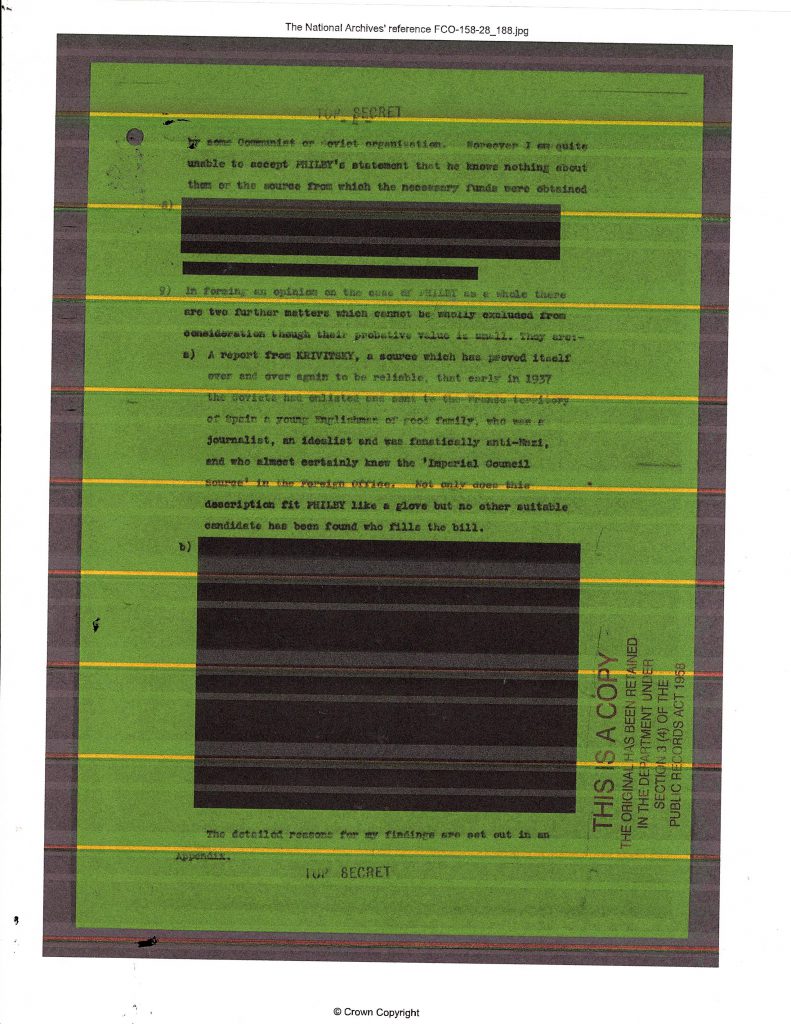
Two paragraphs have been redacted in the copy released to the archive (see figure above). Number 8 is short, and, since it is an independent item, its substance cannot easily be determined. The second is itself a second example of ‘further matters which cannot be wholly excluded from consideration though their probative value is small’. Since the first of these examples is the Krivitsky testimony (which Milmo assessed as almost certainly pointing to Philby), one might expect the second to be perhaps analogous evidence from another Soviet defector, and the likeliest candidate is Konstantin Volkov. I recall that, in White’s report, Volkov appears immediately after the Krivitsky item, and White used the Volkov incident to drive home the pattern between the Volkov and the Maclean disappearances, Philby being the common factor. Why, in that case, when the Volkov story has already appeared elsewhere in the file, it would have been felt necessary in 2015, when the file was released to the public, for such information to be blacked out in the Milmo report, is puzzling.
Moreover, the report says nothing about Gouzenko and ELLI, despite the fact that a memorandum from Reilly, issued on December 6 as a brief to the Foreign Office to introduce it, refers specifically to reports from ‘defectors’ (plural), namely Volkov and Gouzenko, claiming that Philby fitted information from them. From the structure and sequence of the report, it is hard to imagine that Item 8 could constitute a paragraph on that mysterious character, ELLI. It also ignores the suggestion (noted by White) that Philby might have been responsible for the leaking of the news that breaches had been made in the Soviet cryptographic system (VENONA). The real culprit was William Weisband, who had been detected in 1950 and sentenced to a year in prison for contempt (not espionage) in November 1950, but, if British intelligence had not been informed of this by the time of White’s report, it is highly unlikely that Milmo would have learned of it in the short time at his disposal. (The Americans had nasty secrets in their closet, too.)
Another area where Milmo is even less forthcoming than White is in his discussion of Litzi, where he draws attention to the inexplicable trips to the Continent, but does not echo White’s assertion that she ‘has been working for the Comintern’ ever since her marriage in 1934. White even included the observation that she was currently married to a German communist and living in East Berlin, but Milmo overlooks that point. Of course, there is no mention of the embarrassing events concerning the Honigmanns, and the dubious divorce, of the summer of 1946.
What is evident from some of the fascinating details in the Appendix is that Milmo had access to some rich information that must have been maintained on Philby for some time, but which had not seen the light of day, and in some cases still has not, even seventy-two years later.
3. Fresh Items:
Apart from the highlighting of the details about Litzi’s unexplained travel, in my mind, the most astonishing revelation is the firm and confident assertion that Burgess ‘has been a Communist agent since not later than his visit to Moscow which took place in 1934’. By now, of course, Maclean has been identified as HOMER, through the VENONA decrypts and his visit to New York to see his wife, although there is no evidence offered for how long he had been involved in espionage, apart from the fact that he had been a dedicated communist at Cambridge. Thus Milmo’s claim that Maclean ‘had been, it is known, a Soviet agent of long standing’, made in his introduction to the Appendix, is vain and unsupported, with the evasive use of the passive voice.
Burgess, on the other hand, was by most accounts out of any such focus until he absconded with Maclean, and became guilty by default, and by association. For instance, Christopher Andrew writes of Burgess’s state of mind in May 1951 (Defend the Realm, p 425):
Though Burgess was obviously worried, it was reasonable to suppose that the cause of his worries was the fact that he was facing the sack and the end of his Foreign Office career. The very outrageousness of his behaviour protected him against suspicion that he, like Maclean, was a Soviet agent.
Liddell recorded in his diary on June 27:
I find it difficult, too, to imagine BURGESS as a Comintern agent or an espionage agent in the ordinary accepted interpretation of these terms. He certainly had been Marxian, and, up to a point, an apologist for the Russian regime, and would have been capable of discussing in a highly indiscreet manner with anyone almost anything he got from official sources. He would have done this out of sheer political enthusiasm without any regard for security.
And Stewart Purvis and Jeff Hulbert, in The Spy Who Knew Everyone (p 257) inform us, when analyzing the account of Tom Driberg, and describing the fevered meetings that Maclean and Burges had that May:
The more logical and likely scenario is that the two men, one now known to be a KGB spy, and one still undetected, debated their options and made their decisions.
Thus Milmo miraculously, without performing any original research himself, came up with unassailable conclusions about the status of Burgess that had apparently eluded the best minds in MI5, including Liddell. It would appear that some intense research had been carried out during the summer (as reflected in Liddell’s October 1 diary entry that matters had become ‘blacker’ for Philby), but it is not clear which of the evidence discovered had been lying unanalyzed in the files, and which had been revealed through fresh interviews of relevant persons. For instance, Liddell’s diaries show that Goronwy Rees told him in June that Burgess had been a Comintern agent in 1937 (a fact included by Milmo as secondary support: ‘one Goronwy Rees’: the name is actually redacted in the original, but West supplies it without explanation). Milmo reports, however, (in the Appendix) that ‘the records show’ that Burgess was a prominent Communist when at Cambridge, and he also cites a letter sent by Burgess’s friend Derek Blaikie to the Daily Worker dated December 27, 1935 that reports Burgess’s betrayal by becoming involved in right-wing politics.
What I find provocative about such items is the fact that they had been ignored for so long. (Purvis and Hulbert give a good account of how Burgess had been several times vetted by MI5, and his behaviour excused.) Moreover, Liddell seemed to be unaware of this evidence, continued to disbelieve the allegations against Burgess, and for the rest of the year stoutly defended Blunt when other MI5 officers started taking an interest in him – no doubt because the investigation moved on to check out other figures who had been contemporary Communists at Cambridge. Blunt was an obvious candidate, and his case was particularly poignant since his communism was known when he joined MI5, and he had been discovered passing messages from Leo Long in MI14 to his Soviet contacts in 1944. Such revelations would have been acutely embarrassing to the PEACH inquiry, and it is not surprising that the weight of the argument should so heftily be placed against Burgess and Philby. Since this piece is focussed on Philby, I shall write no more on this conundrum now, but it is very bizarre that Liddell appeared to be excluded from knowledge of the existence of highly incriminating documents.
4. The Appendix and Summing-Up:
The meat of the evidence appears in the very dense Appendix, which makes riveting reading.
What is fascinating is the amount of detail provided on the activities of Burgess and Philby (especially), indicating that a close degree of surveillance must have been undertaken for some time. Thus, in a matter of a few months in the summer of 1951, MI5 was able to come up with the following gems:
- Burgess’s prominent role as a Communist at Cambridge.
- Burgess’s visit to Moscow in 1934 with Derek Blaikie, and his subsequent meeting in Brittany, probably with Klugmann, Maclean and Philby, where the decision to sever their ostensible connections with Communism was made.
- Burgess’s employment in Conservative Central Office being revealed by Derek Blaikie in a letter to the Daily Worker.
- Maclean’s letter to Granta, published in the issue of March 7, 1934, in which he expressed his fervent communist opinions.
- Philby’s being refused a reference for the Indian Civil Service by his Cambridge tutors, because he was a ‘militant Communist’.
- Philby’s membership of the Cambridge University Socialist Society.
- Burgess’s leading a hunger march at Cambridge.
- The discovery in Burgess’s possessions of Philby’s Cambridge degree.
- A statutory declaration made by Philby’s grandmother on the occasion of his impending marriage.
- A 1937 letter from Litzi Philby to Burgess inviting him to visit her in Paris.
- Knowledge of Litzi’s friendship with Mrs Tudor-Hart, and the fact that she owned in 1951 a negative photograph of Philby.
- Highly detailed information on Litzi’s multiple journeys to continental Europe in 1934, 1935, 1936 and 1937.
- Knowledge that Litzi had the authority to draw on Philby’s banking account during that period, and did exploit that benefit in Greece and Austria.
- Availability of correspondence between Litzi and Philby that confirms a strained relationship.
- Litzi’s mother revealing that Philby was contributing to her maintenance, derived from her application to the Aliens’ Tribunal.
- Philby’s letter to the Passport Office of 26 September, 1939, requesting permission for Litzi to go to France, which contains a number of falsehoods.
- Litzi’s ability to gain permission to go to Paris in December 1939.
While these items are not all equally significant, it is evident that MI5 had been keeping close tabs on Philby and Burgess for many years. (Nigel West, in his history of MI5, states that Milicent Bagot presented the secretly-classified files to Arthur Martin after he returned from Washington with Director-General Sillitoe.) The contents of the dossier suggest, however, that MI5 must have been grossly incompetent in its failure to exploit any of the material. Of course there is another explanation, based on my analysis from last month: in late 1939 MI5 had been advised to put the Philby file into abeyance, since he was about to become a reputable MI6 officer. Nearly all the Philby-related items in the list above antedate 1940. The file had clearly not been destroyed, and, if it was retrievable in 1951, it is presumably in the same state in 2023.
The document titled ‘A Summing-Up After The Cross-Examination’ (undated, but probably not submitted until January 1952) merits broader publication, since it contains, in a structured form, the evolution of Philby’s statements during the interrogation, the counter-arguments shown to refute them, and Philby’s ensuing written and oral replies to them, dated December 28 (see sample above). The tables show the webs that Philby span for himself, and his feeble attempts to explain his lies, in matters such as his associations with Burgess and Maclean, his wife’s excursions, and his acquaintance with Tudor-Hart and Klugmann.
One entry especially caught my eye, since its subject-matter does not appear in either the report or the Appendix. It is Item 4 (displayed in the extract shown above), and relates to Philby’s recruitment by Section D of SIS, a matter about which I have written with keen interest. The text (with redactions) appears as follows:
First Statement: “In June 1940 I was introduced to Section D by XXXXXXX (a phrase of about thirty-five characters).”
Evidence for its rejection: (a) Statements by XXXXXXX (a phrase of about sixty characters) that PHILBY was recruited by BURGESS. (b) Spontaneous remark made by XXXXXXX (twenty characters) showing that she played no part in PHILBY’s recruitment.
Summary of Second Statement: PHILBY repeated the assertion that XXXXXXX (twenty characters) had recruited him until, faced with the evidence, he withdrew to the extent of admitting that he might have mis-interpreted the circumstances.
Summary of Third Statement: PHILBY continued to maintain that he had mis-interpreted the circumstances of his recruitment to S.I.S. but admitted that he knew that BURGESS had often claimed to have introduced him.
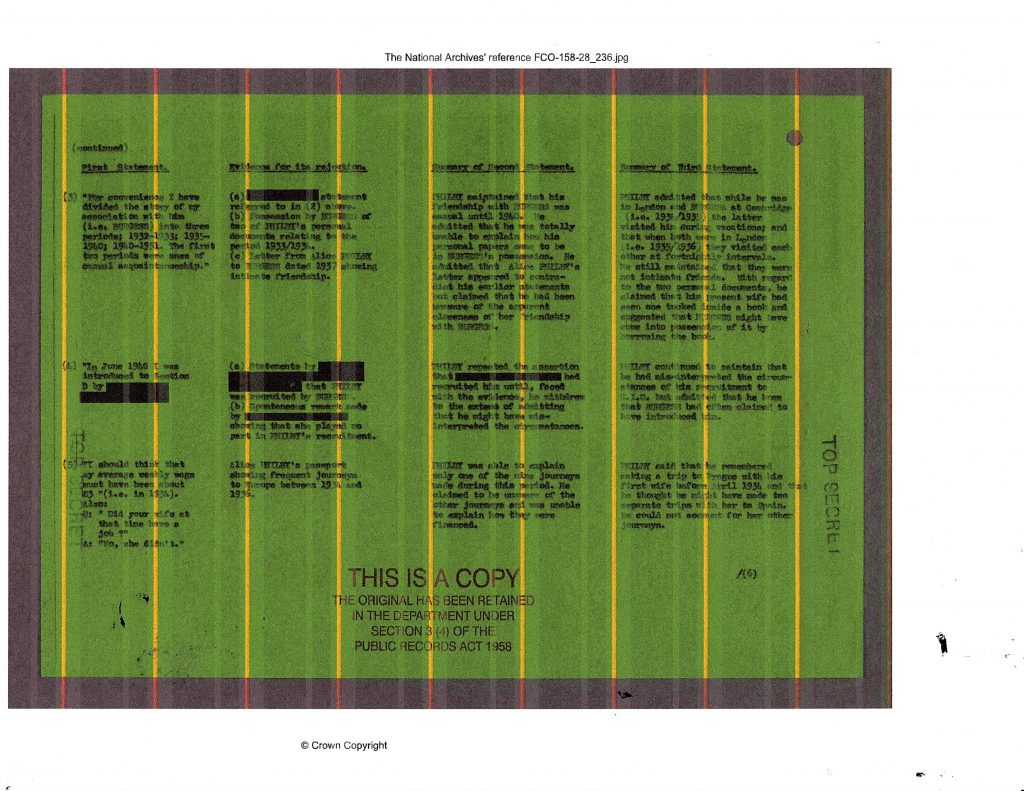
This is an intriguing exchange. First of all, Milmo quite blatantly introduces a female into the story, which must surely be Flora Solomon. (One might have expected readers of the report, if they got that far, to raise an eyebrow or two at the involvement of a woman.) Philby’s first statement seems to indicate that he regarded Solomon and Frank Birch as aiding his entry into Section D of MI6, an account that is supported by the evidence from the Solomon file (see last month’s report). This may well have been the strategy agreed between him and Vivian, so that he could be admitted smoothly, and without controversy. The Evidence for the Rejection is flimsy: some other MI6 officer could well have been encouraged to say that Burgess was responsible, and Solomon’s denial might likewise have not been sincere. Philby must have realized that it would not help him to be too obdurate on this point, since it might antagonize any allies he had in MI6, so made a tactical withdrawal. (In his memoir, he suggests that Burgess was indeed behind his recruitment, Burgess invoking the services of a Captain Sheridan at the War Office to set up a staged ‘interview’ with Miss Maxse of MI6.)
Yet I wonder how much of this Milmo understood. The careless reader at the time might have interpreted his script to indicate that Burgess facilitated Philby’s final entry into MI6, when, as I have explained earlier, Section D was untethered from MI6 into SOE, and, after Burgess was sacked, Philby worked for a year under Colin Gubbins in SOE training. He was then re-introduced to MI6 (so he wrote) through his ex-colleague in SOE, Tomás Harris, now working for MI5, who used his connections there with Dick Brooman-White and Dick White to arrange an appointment with Felix Cowgill of Section V of MI6. Cowgill hired Philby late in 1941. That is not the impression that Milmo’s text and chart suggest.
Analysis, Outcomes, and Conclusions
The Interrogation was a failure. The major point of frustration for MI5 was the fact that Philby, despite all the bluster and embarrassment, and the apparent failure of memory, denied everything. Without a confession, no indictment could proceed, since so much of the evidence was circumstantial, and an open trial would simply have been too embarrassing for both intelligence services. Yet the purging carried out through the process of discovery simply revealed more ills.
Th interrogation was moreover not carried out with precision or flair. The whole process was flawed from the start. Milmo was all too rushed. He failed to push home on grounds where he had strong evidence (such as Litzi’s travels), but was confused over many other points (such as the details of the divorce, and the Honigmann business). Milmo stumbled over the vital question of how and when Maclean had been alerted, and thus failed in his given objective. He painstakingly went through many of the same incriminating events that I listed last month, and rightly drew attention to many troubling facts, such as revealing the inexplicable activities of ‘Lizzy’, and the failure of the couple to get a divorce. He muddled some issues, however, such as the movements by Philby concerning Litzi’s travel in the winter of 1939-1940, and failed to follow up when he had an advantage.
At times Milmo appeared to be getting close to the nub of the matter, but was prevented, either because of the terms of his brief (which concentrated on the ‘Third Man’ leakages), because he was not given full information, because he was not give enough time, or because he was discouraged from airing certain topics. For instance, he wrote:
One wonders whether the real reason there were no divorce proceedings prior to 1945 [sic!] was because it was felt that Lizzie’s position as a Communist agent required her to remain the wife of Philby. The suspicion is reinforced when it is known that from 1942 onwards Lizzie was in fact living with the man to whom she is at present married.
Yet this passage is followed by a redacted segment – perhaps too embarrassing. And, Buster, too much use of the passive voice! Too many vaguenesses! And why did he not ask how the Krivitsky disclosures were not followed up, or whether MI5 and MI6 had tried to track and interpret Litzi’s movements in 1937 and 1938? It was clear that the goal of the inquiry was to determine whether Philby had lied, but not to ascertain why his lying had been so imperceptible.
The problem also was that Milmo was not shown the full dossier, nor did he interview any MI6 officers, as he explicitly admitted. Of course, MI6 officers might not have co-operated (Menzies might have excluded them from the inquiry), but that itself would have constituted intelligence. It looks certain (outside the segment frustratingly redacted) that Milmo was not shown the October interview with KASPAR, or the documents from the Honigmann file. What might he have concluded if he had learned that Litzi Philby’s identity had been withheld from MI5 investigative officers, that Litzi was left uninterrogated when her partner debunked to East Berlin, and that Philby and MI6 concocted some obviously phony story about Reuters while declining to admit that Litzi was still Philby’s wife at the time?
In summary, Milmo stumbled over the vital question of how Maclean had been alerted (or even the predecessor question of whether he had really been alerted just before he absconded), and thus failed in his mission. Having established that Burgess had ample opportunity to warn Maclean, weeks before the escape, that the HOMER investigation was closing in on him, Milmo failed to consider that a plan for escape might have been crafted at that time. His report showed an enormous failure of imagination: if Burgess and Maclean had escaped to Moscow (as the multi-departmental team believed), it would have required KGB operatives to have been prepared and organized in Continental Europe to secure a smooth passage. This obvious fact is ignored by those who claim that the escape was planned at the last minute, even by such a careful and close observer as Robert Cecil: Nigel West even suggests that MI5 doctored the records to indicate that the interrogation had been put back three weeks.
The whole exploit would have demanded careful planning, and a sudden change in schedule would not have been accommodatable. For the diplomats to have known what to do when they arrived in St. Malo they must have been informed of what those plans were. It would have been utterly impossible for Philby to have been that medium (despite what Douglas Sutherland claimed). If there had been a late leak of any significance, someone in London (the ‘Fourth Man’) must have been responsible. Yet Milmo never pursued that angle, nor did he analyze closely the role of Burgess as emissary.
Yes, MI5 had nailed an obvious traitor, and it was thus convenient for the authorities to convince themselves that they had discovered who the ‘Third Man’ was, but they had neither been able to dispatch that issue with confidence, nor had they been able to dispose of Philby in a way that could satisfy his defenders and his pursuers. And the haste with which MI5 officers piled on Philby distracted their attention from the villainous Blunt (maybe intentionally). Why did MI5 undertake such a feeble exploit, the holes of which should have been immediately detectable? Probably because they had a known traitor on their hands, and needed to associate him with a semi-plausible example of treachery, while concealing the more dangerous and embarrassing case of the VENONA leakage, since he had been exposed to its revelations. While senior officials and officers in the Foreign Office and MI6 knew all about the VENONA case, the dossier was compiled primarily for the benefit of Eden and Churchill, who were surely not yet aware of the background. Milmo’s report significantly overlooked the VENONA exposure that White had listed.
Moreover, there is no record of the authorities showing any bewilderment at the supine inability of MI5 and MI6 to have detected anything suspicious about Philby’s activities in the years before. At some stage, one would have expected Eden and Churchill to react with amazement at the fact that so much of a nefarious nature had been gleaned about Maclean, Burgess and Philby during their careers, yet nothing was done about it at the time. If any inquest took place at the time, it has not been recorded.
Thus the irony of the interrogation is that the authorities had indeed alighted on the right suspect, but for the wrong event. Philby was in fact the ‘Second Man’ who had in April 1951 (through the KGB) alerted Maclean to the fact that he had been identified as HOMER, a message that would then be reinforced by Burgess in person. The timing of the escape was determined by a coincidental understanding of the date of interrogation that turned out to be wrong. In their desire to incriminate Philby, the authorities grossly misrepresented the final days of the Maclean investigation. When Burgess and Maclean absconded, however, there had been no immediately precedent leak, and thus no ‘Third Man’, only an unacknowledged ‘Fourth Man’ who passed on instructions, namely Blunt. The phenomenon of that phantom Third Man would however come to haunt Britain’s intelligence services, and the Foreign Office, for decades to come, and even spawn the ridiculous search for ‘ELLI’, which consumed so many MI5 man-hours, and cast a long shadow, especially over Roger Hollis.
My inquiry at this stage does not look beyond 1951, but even before the year was out, MI6 started to question the implied guilt of their star officer. The Secret Intelligence Service predictably did not accept the report’s conclusions with any enthusiasm. As Menzies wrote:
I cannot bring myself to believe that an enemy agent would sit in our midst and fool MI5 and my service for so long a period, unless one accepts the view that his activities were confined to protecting himself.
That statement constitutes a weird kind of reasoning, but would come back to haunt Menzies. MI5 and MI6 were indeed fooled, and MI6 itself encouraged that behaviour.
Liddell himself expressed a bizarre kind of excuse for Philby in his diary entry for December 16, where he wrote that MI5 ‘was pointing out to Menzies that PHILBY’s activities in recent years may have amounted to no more than betrayals in cases where he thought they were necessary to safeguard his own position’. What the master of counter-intelligence meant by that statement is not clear to me. On December 21, he gave the opinion that Milmo had come down too heavily on a ’positive assertion of PHILBY’s guilt’, and suggested that the evidence was ‘no more than a chain of coincidences.’ Some chain. One marvels at Liddell’s naivety.
And so the year ran down. MI5 informed the Americans that Philby was probably a spy, but that MI6 claimed that the accusations were not proven. Bedell Smith of the CIA agreed with this conclusion. Sillitoe prepared to retire, and Liddell hoped to replace him. As West writes: “The PEACH case was quietly consigned to MI5’s top security Y Box Registry”. MI6 hoped that Philby would be forgotten, but their collective stubbornness in trying to reinstate him ended up hurting them.
Yet I must include one important item from 1953. It opens up a completely new field of inquiry, and casts the spotlight acutely back on that unidentified woman in Milmo’s Summary, Flora Solomon, and her lover Dr. Eric Strauss. It appears in one of the Flora Solomon files, KV 2/4633, and concerns testimony from someone called Stevenson, reported here by Graham Mitchell of D Division, on December 28. Part of the heavily redacted text runs as follows:
. . . that STRAUSS knows a great deal more about the security suspicions connected with PHILBY, BURGESS and MACLEAN than he has any right to. For example, he recently mentioned xxxxxxxxxxxxxx that he knows that there was a damning incident in Kim’s past relating to Turkey. Xxxxxxxxx assumes that STRAUSS gets his information on these matters from Flora Solomon, who in turn gets it from Aileen. . .
Flora Solomon demands further investigation. The saga continues . . .
Summary
The disappearance of Burgess and Maclean required a convenient scapegoat, and for obvious reasons Philby – already under suspicion – was selected. Yet Dick White and Stewart Menzies knew that the unveiling of Philby would stir a hornets’ nest of unpalatable facts. The oversights and omissions undertaken over the career of Philby were much worse than those associated with Burgess and Maclean. In its joint investigation, MI5 and MI6 had the impossible task of satisfying multiple constituencies: their political masters, who wanted quick justice; the hawkish Americans, who wanted the stables to be cleaned; the old guard defenders of Philby in MI6, who found the whole process reprehensible; the lower-grade officers in MI5 who did not understand the indulgences shown by their leaders. Yet any truths that came out would incriminate MI5 and MI6 as much as Philby. Philby in turn called their bluff, since he knew that they had done a deal with the devil. White and Menzies could rely on Philby’s silence because of the bigamy charge, but they could not protect themselves and their successors forever from the accusations of Soviet defectors, the leaked hints from disaffected insiders, and the inquisitiveness of investigative journalists.
In his biography of Menzies, Anthony Cave Brown quotes Anthony Montague Browne, Churchill’s private secretary from 1952 until 1965 as saying: “There is one secret left in the Philby case, and that I may not discuss.” Cave Brown goes on to speculate that it might be that Philby was used as some kind of ‘double agent’ to transmit disinformation to the Soviets. I have written before that I consider that idea absurd: how would his manipulators know that Philby was not indicating that he was supplying false information? It is far more likely that the secret was to do with his hoodwinking of MI6 at the end of 1939, and the circumstances of his bigamous marriage in September 1946.
(This month’s Commonplace entries can be seen here.)

